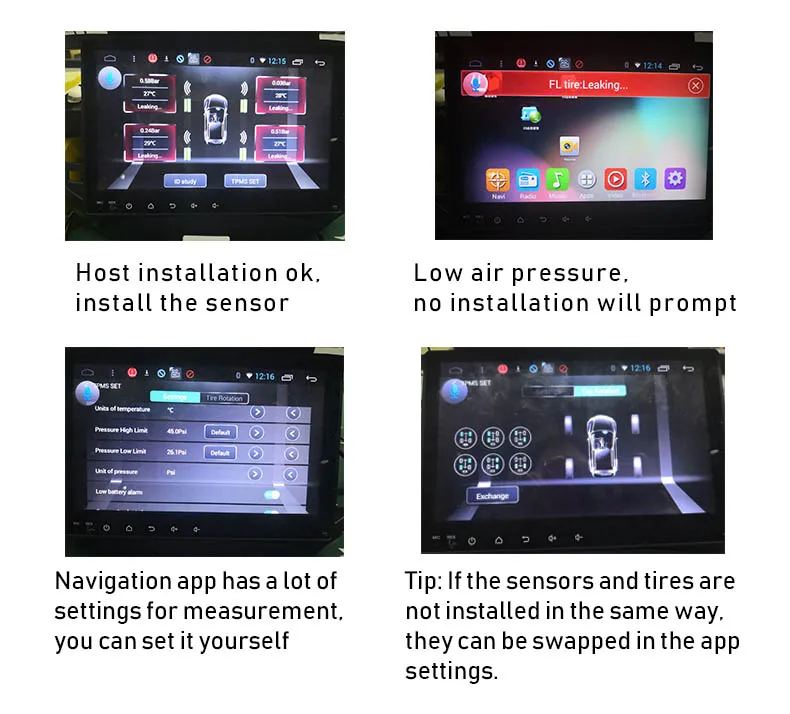This post contains affiliate links. Read the full disclosure here.
A tire pressure sensor monitor ( TPMS) is a sort of electronic device that is capable of monitoring the air pressure inside pneumatic tires on all vehicles. It usually gives real-time pressure information to the driver through various means.
These means could be a gauge, a pictogram display, or even a very simple low tire air pressure warning light coming on.
Can Tire Pressure Sensors Leak Air? Certainly tire pressure sensors can and do leak air if conditions permit, such as when you remove a rubber snap-in valve based TPMS, the sensor from a wheel, or replace a tire sensor with an incompatible or new TPMS snap-in valve that is only designed to be used with a TPMS sensor.
 Should you, for whatever reason, attempt to reuse the original rubber snap-in valve and its core, air may also leak out of your tire too.
Table Of Contents
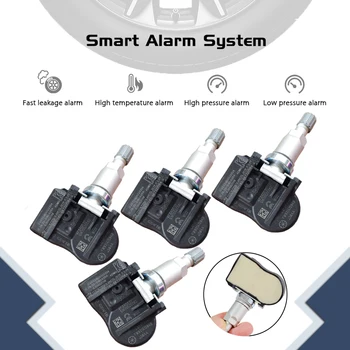 1 Similar Posts
1 Similar PostsYes, a TPMS can leak air provided the necessary conditions allow it to. For instance, if you replace an old one with a new TPMS snap-in valve meant for use only with a TPMS sensor, air may leak out due mainly to their incompatibility.
Secondly, if you make any attempt to reuse an original rubber snap-in valve and its core, the tire air may also go out. In fact, various kinds of malfunctions can make a tire pressure monitor sensor leak air profusely.
How do I know if my TPS ( tire pressure sensor) is bad?It is indeed easy for you to know whether your tire pressure sensor is bad or not. Sometimes, the TPS warning light may suddenly come on, but after driving for a short while, the light may go off, if everything is fine.
However, if it refuses to go off as it should, and you later discover your tire pressure to be normal after inspection, then obviously you may have a tire pressure sensor malfunction on your hands.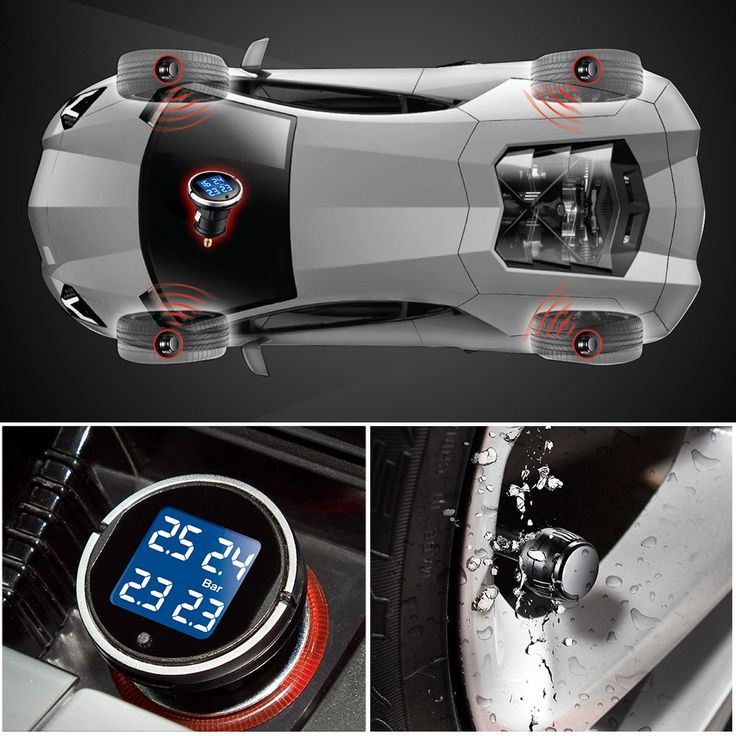 Some of the following symptoms diagnose a TPS sensor malfunction or damage :
Some of the following symptoms diagnose a TPS sensor malfunction or damage :
( 1). Showing low tire air pressure even when they are normal. In other words, giving out a false alarm.
( 2). TPMS warning light illuminates. Sometimes the warning light of the system may come on even when there are no reasons for it to.
( 3). If the device gives out an incorrect warning not related to any tire air pressure conditions, it implies a bad sensor as well.
Furthermore, if the device fails to give you any warning to notify you of a deflated tire, it may be bad. Also, if its warning light does not come on in the presence of a depressurized tire, it is a bad sign too. The sensor can also signal its malfunction if it gives wrong warning signals when nothing is actually the matter with your tires at all.
How do you fix a leaking tire pressure sensor?It is quite easy to repair a bad tire air sensor. First, unmount the tire with the bad sensor. Once this is done, you can simply remove the bad sensor and replace it with one that is working fine.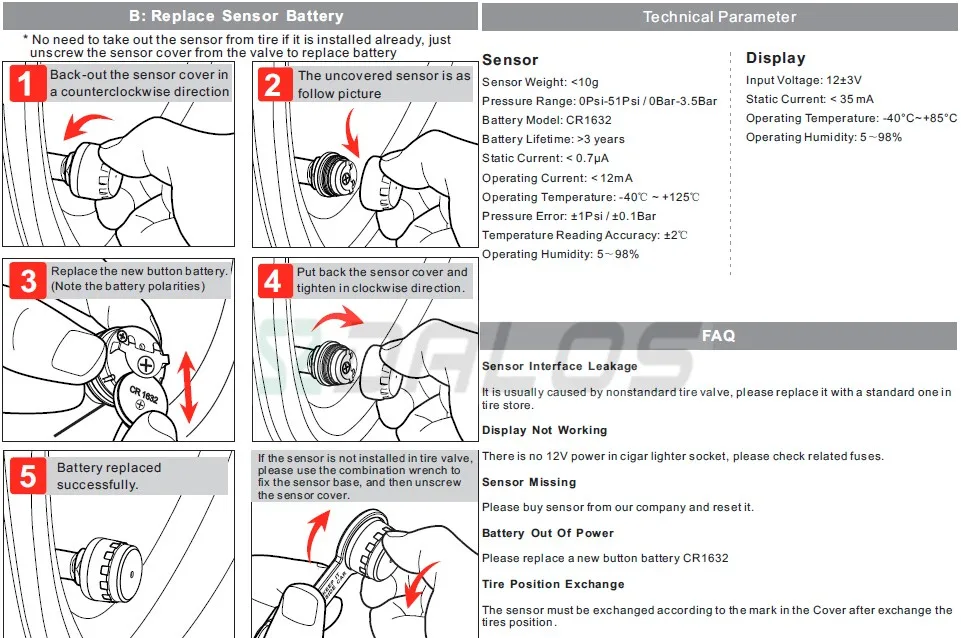 After installing the new sensor in the tire, remount your tire and reinflate it too. This will do it.
After installing the new sensor in the tire, remount your tire and reinflate it too. This will do it.
Trending Searches
It is certainly wrong to drive with a tire pressure sensor fault. This is particularly so when the TPMS light stays on permanently. If the light stays on, it simply means that your tires are under or over-inflated.
This development can cause unnecessary accelerated wear of the tires, which could lead to tire failure or even a sudden blowout. This is agreeably a dangerous situation for both you and other road users as well.
How long does TPS last?Tire pressure sensors use the Lithium-ion battery in most cases, which can last for as long as between 5 to 10 tears, though about 5 to 6 years is their projected safe life span for the older versions of tire pressure sensors.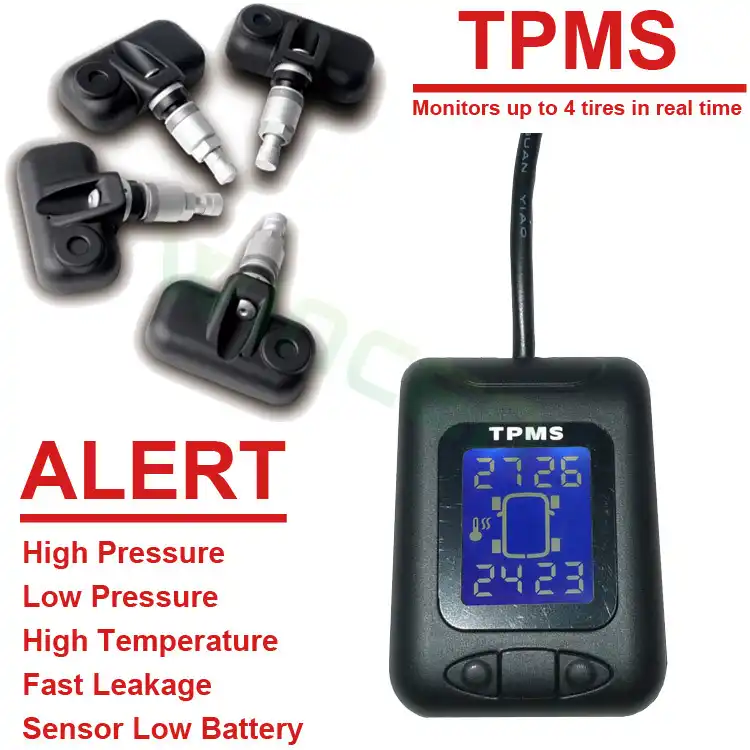
The Li-ion battery inside TPMS sensors can last anywhere between 5 to 10 years, and so will the sensors themselves.Â
How do you remove TPMS?Removing the tire pressure sensor is indeed an easy task that can be accomplished in mere minutes, provided you got the correct tools. First, you must unmount the tire from the rim.
Thereafter, proceed to uninstall the faulty sensor and replace it with a new one. Finally, inflate your tires through any of the conventional ways discussed in the article previously and you are good to go.
How do you fix a TPMS sensor without replacing it?If you want to fix a tire pressure sensor without replacing it, simply apply thread lock sealant to the outside of the threads of the recourse sensor, and save about1/8 inches from the end that has no valve cap on it in the process.
Frequently asked questions(FAQ)Can you replace a TPS with a regular valve stem?No, you cannot. If you replace a TPS sensor with a regular or conventional valve stem, it is an avenue given for your tires to leak air. In other words, the TPS is not compatible with a regular valve stem. Simple.
If you replace a TPS sensor with a regular or conventional valve stem, it is an avenue given for your tires to leak air. In other words, the TPS is not compatible with a regular valve stem. Simple.
A tire pressure sensor should be replaced whenever it begins to leak air unnecessarily. It is also due for replacement when it gives false alarms and generally functions in ways that are simply unusual or not normal. (Read Also:Does Spare Tires have TPMS?)
Does Walmart install TPS?Of course, Walmart installs tires. In fact, Walmart offers all kinds of basic tire services including a road hazard protection warranty as well. At Walmart, valve stems or TPMS service installation cost only about 3 dollars for each tire. In reality, Walmart installs tire valve stems even on cars that do not have the TPMS.
Can Walmart program TPMS sensors?Definitely, Walmart programs TPMS sensors. A sensor can relearn itself while just driving for a few miles only if you have the original TPMS on the wheel.
However, you should make sure that your tires have sufficient air based on how many PSIÂ is on the sticker on the driver’s door.
A new TPMS sensor has got to be reset with a special tool. All valve stems issued from the aftermarket TPMS sensors that come as programmable, universal, or clone-able sensor units, can be reprogrammed.
However, these sensors must be programmed using the proper protocol or application details for the vehicle before they can be installed.
Will Walmart installs the tires you bring in?Yes, Walmart will install tires you bring in, provided such tires are bought at any Walmart store with a Tire and Lube Express. You can have recommended tires installed at Walmart even though the cost of doing so may vary from place to place.
To get this done without any delay, simply print a copy of your order confirmation page or email, and bring the same when you pick up your tires. This will definitely give you a faster in-store service always.
Yes, TPMS, as the latest technology in proper tire use and maintenance is more than worth it, if I may say. In addition, the good news is that you really do not have to replace all 4 tires with TPMS if only about 1 or 2 are faulty. This has the tendency to reduce the overall expenses or costs of any replacements. So, yes, TPMS is certainly worth it.
Do I need to replace TPMS when replacing tires?This depends on a lot of things really. Notably, most experts recommend that you should service your TPMS after changing or installing new tires or wheels by just replacing their valve cores, while at the same time retaining their nut seals and caps on the valve stems.
After all, these, test the system in order to make sure that everything is just fine. Many direct systems are known to display the actual air pressure in each tire.
So, essentially, you may not really have to change the entire TPMS whenever you are changing tires since you have the option of changing only their valve cores while retaining the nut seals and caps of the valve stems.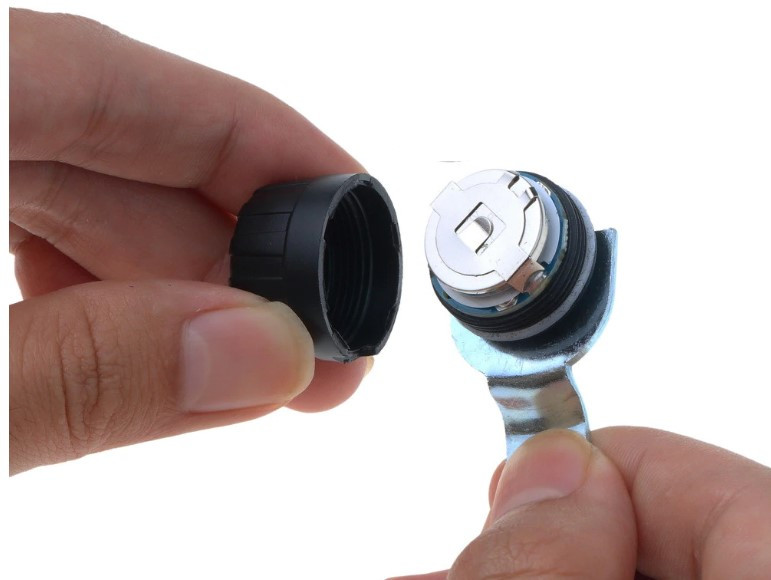
The cost of TPMS service and replacement varies from one auto shop to another. However, for most auto specialists, the cost starts from about 40 to 100 dollars for each sensor.
This will ultimately give you about 160 and 500 dollars for a set of 4 sensors. In reality, it costs close to 30 or 70 dollars including the labor of installation. A careful online search will likely reveal some of the most reliable auto shops nearest to you that can do it well.
How long can you drive with a TPMS light on?Generally, your TPMS light is supposed to come on whenever there is something the matter with your tires or their accessories. However, sometimes the lights can come on even when there are no complaints.
But whenever this happens, under normal circumstances, the lights will go off after you have driven for just a short while only, if all is well with your tires.
If they fail to automatically go off on their own even after driving for about ten miles, there may really be the need to get them to reset according to the producer’s accompanying manual.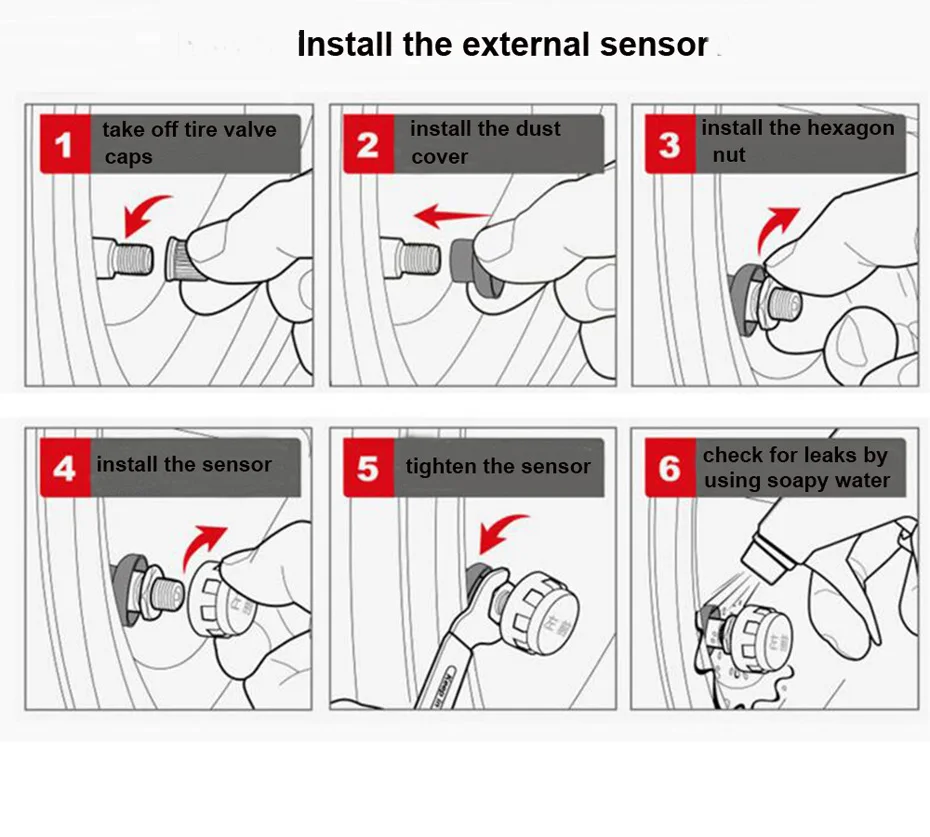
It is commonly said, and rightly too, that those vehicle tires are actually the next best thing in the vehicle after its engine. In fact, it may not be out of place to place them side by side in importance. After all, none of them is useful without the other.
There is no gainsaying therefore that, our vehicle tires need and deserve any attention we give them. First, make sure that your tires are normally inflated. This means that they must not be either under or over-inflated by putting in the correct tire PSI recommended by the manufacturers.
Always make sure that you check your tires regularly while looking for anomalies or any odd changes. Furthermore, refrain from parking your vehicle in sunny environments by making sure that you park only under shaded trees or in roofed garages.
Check for signs of any abnormal or accelerated tire wear and tear. Doing this on regular basis will also enable you to discover any potential problems with other vehicle components, such as the wheel bearing, for instance.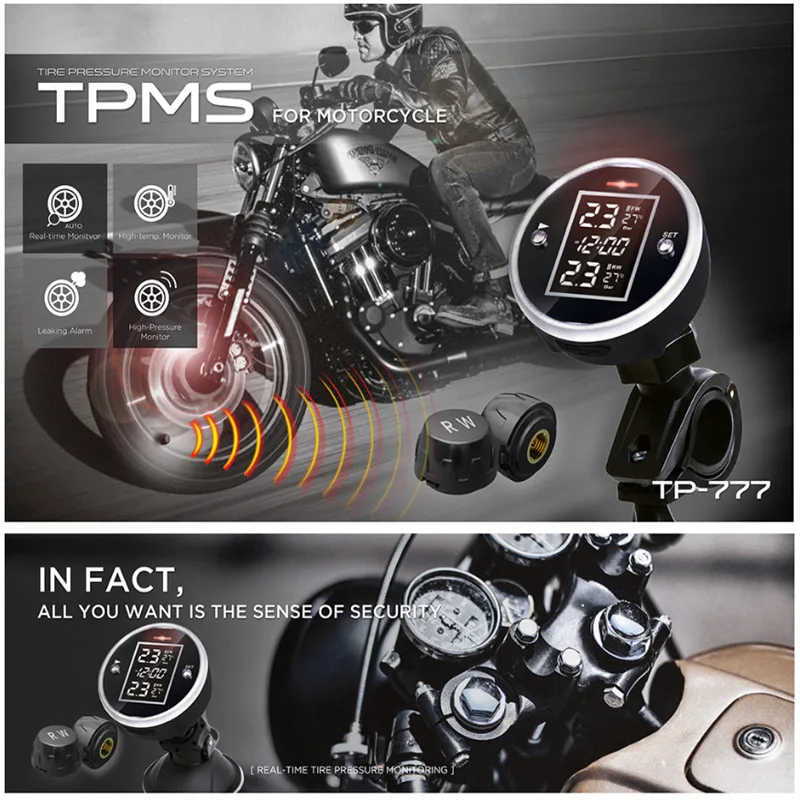
Drive very carefully and apply the brakes properly too. Whenever you are cleaning or washing your vehicle tires, use only those cleaning agents recommended by the manufacturers. In addition, do not use tire shiners that are either injurious or corrosive to rubber or plastics.
Part of driving carefully and using your tires properly include being careful always in order to avoid hitting potholes or other obstacles that may be present on the roads.
If you maintain this stance, your tires will not be as threatened as when you don’t, regardless of the terrain or nature of the roads you commonly ply. Make sure that you always refer your tires to qualified tire specialists for all your tire issues or complaints.Â
Can Tire Pressure Sensors Leak Air – ConclusionThe TPMS is indeed an innovation that is like no other when it comes to tire maintenance. It is primarily designed to warn or alert you whenever there is something the matter with your tires.
Because of the indispensable role it plays in effective tire maintenance, you are not at all advised to ignore it whenever its warning light is showing.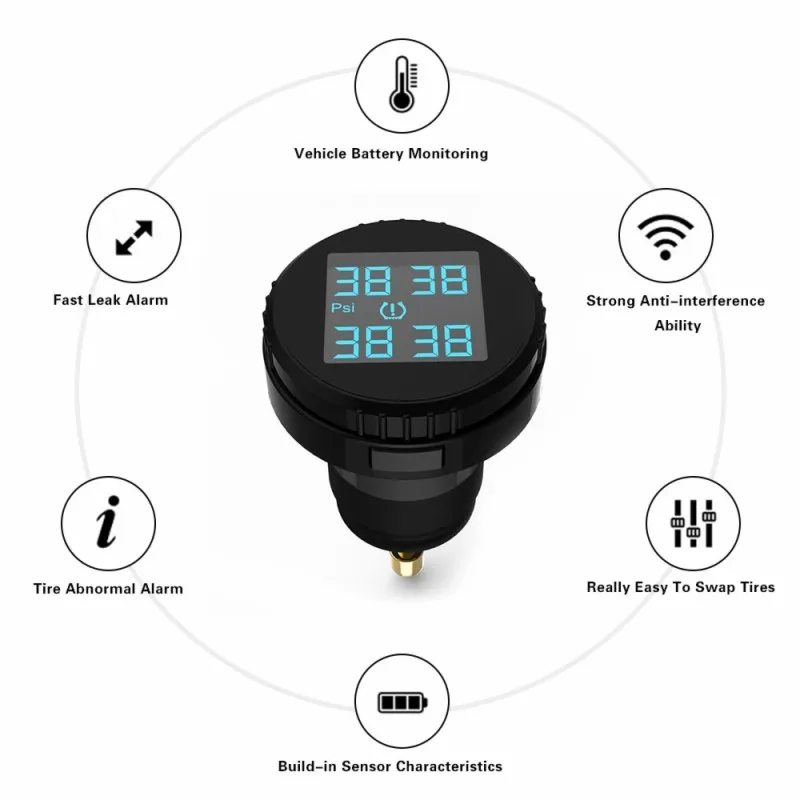 Â
Â
The moment you notice that its light is up, park at a safe place and inspect the tires very carefully.
You may really have the best of high-quality tires, but if your maintenance culture is poor, they may not be in your service for as long as they should or even as efficiently.
Whenever their parts or other accessories are not compatible, refrain from swapping them for fear of taking unnecessary risks.
Not really an expert on these things, but as far as I can see, its just hanging on the valve stem. See a variety of valve stems, really don't know if these are all standard.
Can wonder why its even mounted on the valve stem where centrifugal force is the greatest with a possibility of it shaken loose. Could be mounted on the inside of the rim using the good old fashion cheap conventional Scharder Valve stem that has successful 100 year old history. And held in with a couple of screws.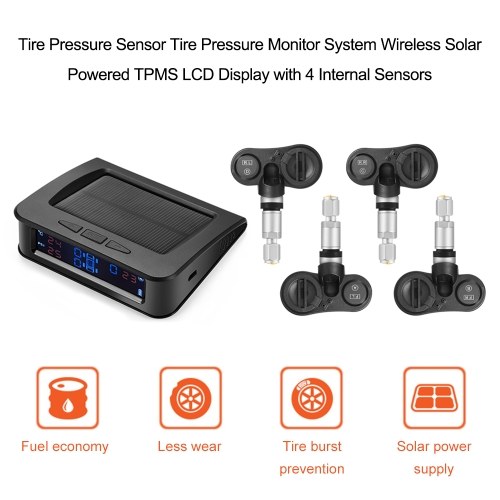
Looking at various hardware seems like a couple of bucks new valve stem would be the cause of a leak. But not according to my son's dealer, hit him with an 80 buck bill to replace it.
Also understand some use a battery that can go dead when technology exists to make these sensors passive and cheap technology at that!
Just appears to be another means for the consumer to be robbed and not in a dark alley with a gun pointed at your head. And not a very intelligent design.
You want problems? We have problems.
Save Share
JavaScript is disabled. For a better experience, please enable JavaScript in your browser before proceeding.
1 - 20 of 21 Posts
1 - 20 of 21 Posts
 Please consider creating a new thread.
Please consider creating a new thread.Top
1. What happens if I remove the sensors from the wheels?
A warning will appear on the screen. There is no way to get rid of this warning other than removing the sensor code from the driver display.
2. If one sensor in the system stops working, can I replace it?
Yes, each sensor has a unique identification code, just program a new sensor on the display, it will automatically replace the old one. But first, try replacing the battery.
3. Do I need to reprogram the sensors after a tire rotation?
No. The vehicle owner must rotate the tires after a certain mileage, but if the rims are used in the same places as before rotation, the display will not need to be reprogrammed.
4. Can the sensors interfere with each other?
Each INCAR TPMS sensor has its own unique code, just like each car has its own VIN number.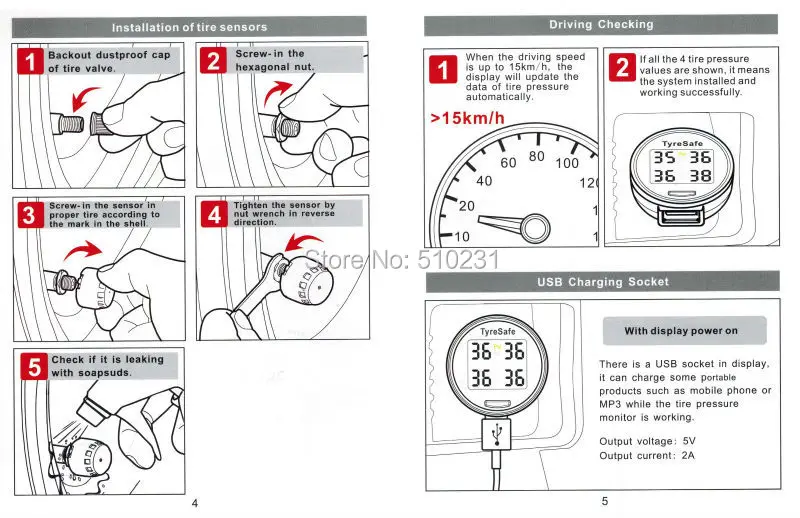 The sensors send signals independently of each other, and it takes very little time to transmit the signal, so the chance of mutual interference is extremely low.
The sensors send signals independently of each other, and it takes very little time to transmit the signal, so the chance of mutual interference is extremely low.
5. I am having trouble recognizing the sensor, what could be causing it?
This problem can occur when using an extension on the valve stem. First, remove the extension and install the sensor directly on the stem, this usually solves the problem.
6. Why is there no pressure or temperature reading on the LCD, only the tire icon is flashing?
Sensors transmit pressure and temperature every 5 minutes. The display will stop showing pressure and temperature if it does not receive a signal from the sensor for more than an hour. It's probably time to replace the battery.
7. How can I turn off the low pressure warning on the screen?
Inflate the tire marked on the display to the correct pressure.
8. The TPMS display gives a low pressure warning when I start the car, but after a few minutes of driving the alarm goes off.
In cold weather, the sensor receives a pressure value that is lower than the specified one. As you ride, the air inside the tires heats up and the pressure increases proportionally. Try expanding the tire pressure range from the lower limit.
9. Will the sensor cause tire wear?
There are no problems with wheel balancing. On the contrary, due to the constancy of the nominal pressure in the tire, its wear will be minimal.
10. A few weeks ago I filled up the tires and everything was fine, but now the display shows me that the tires are low pressure.
Trust the INCAR TPMS sensors. Either the average daily temperature in your area has dropped due to the change of season, or there has been a natural air leak. First you need to pump up the tires.
11. Can the display be reset to factory settings?
Yes, to restore factory default settings, turn off the display, press the Set button and turn on the display. The red indicator will turn off and the factory settings will be restored.
The red indicator will turn off and the factory settings will be restored.
12. I have an alarm on the display, what should I do?
First, park in a safe place on the side of the road. Find out which wheel is causing the alarm by checking the icons on the display as well as the type of alarm. For example, it could be overpressure in a tire, which is related to base pressure settings - overheating can occur after a long break from driving on a hot day. Referring to the instructions, you will accurately determine the source of the problem and its exact location. Do not continue driving until the display returns to normal.
13. I received a low battery alarm, what should I do?
Eventually, all batteries run out. Three sensors from the INCAR TPMS range have replaceable batteries that can be easily replaced if needed. The CR1632 type battery is available from electronics stores or online. Two more sensor models do not allow you to change batteries - you will have to buy new sensors.
14. What is the display sleep mode?
If the display is left idle for more than 15 minutes, it turns off to conserve battery power. When it detects movement again, it will beep and the screen will come to life, indicating the exit from sleep mode. If the display was turned off overnight (which is optional), simply turn it on before leaving the parking lot and the tire pressure and temperature will be updated every 5 minutes again. Even if your display is in sleep mode, the INCAR TPMS system will always monitor the tires and will give an alarm if the pressure or temperature is no longer within the set parameters.
15. I get a hard braking alarm, what should I do?
When the tire is under extreme load, a slow leak signal can be obtained. The fact is that at first the pressure in the tire jumps up, and then decreases over a short period of time. This situation is similar to a slow loss of air, and it often occurs when there is water inside the tire.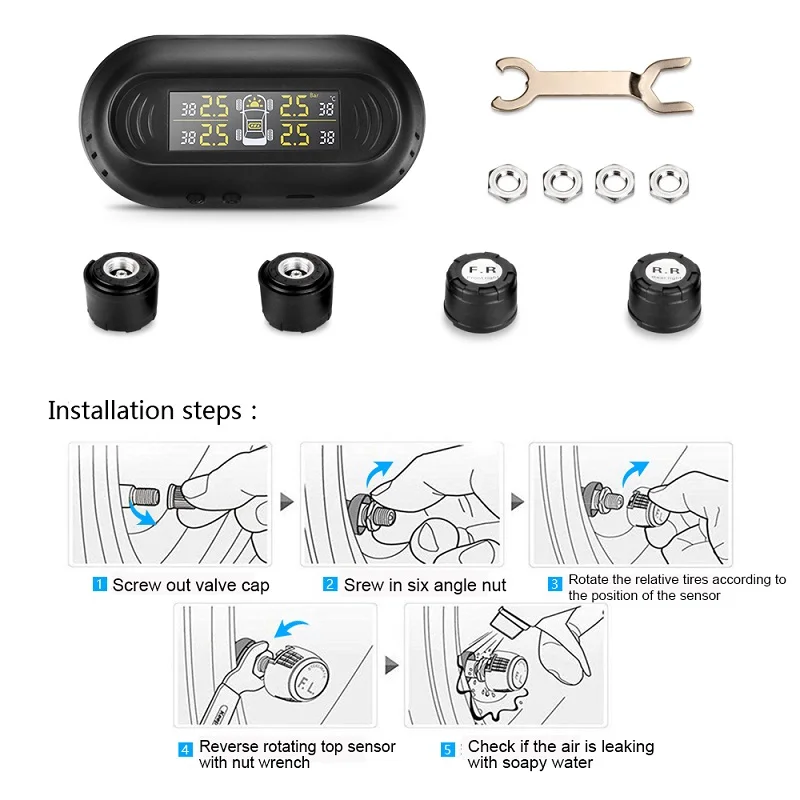
16. Everything works too well, how can I test the INCAR TPMS system?
The switched on display should be left in the driver's cab, and the sensors should be unscrewed one by one and re-tightened on the valve stem. The fast leak alarm should activate and then stop when the sensor is returned to the wheel. The beep is loud enough that you can hear it.
17. Are there any special recommendations for winter storage of INCAR TPMS equipment?
It's a good idea to remove the sensors and display from your car if it's parked for a long time, especially in cold weather. Keep the system in a warm place, as you will significantly extend the life of the batteries. Number the sensors or put them in an egg carton so they can be put back on the same wheels. This way you avoid having to do a new setup. The sensors do not use power unless they are mounted on the wheel.
18. How will the driver's display behave if the sensors are installed on only part of the vehicle's wheels?
The INCAR TPMS cycles through the tires.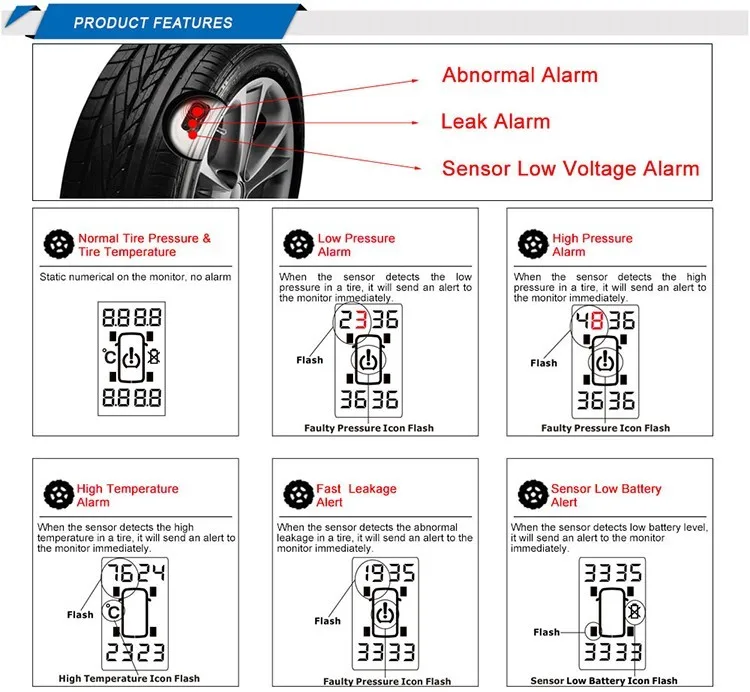 As the cycle progresses, the tire symbol flashes on the display to indicate that that particular tire is being tested. You will see the exact pressure and temperature for that tire. The display will then automatically move to the next wheel on which the sensor is installed. You will only get readings for tires equipped with sensors, the rest will be skipped and will not take time.
As the cycle progresses, the tire symbol flashes on the display to indicate that that particular tire is being tested. You will see the exact pressure and temperature for that tire. The display will then automatically move to the next wheel on which the sensor is installed. You will only get readings for tires equipped with sensors, the rest will be skipped and will not take time.
19. If you shake the driver display, you can hear something small rattling inside.
This is not a standard situation. If you feel that there is something wrong with the display, or if this sound annoys you while driving, you should have the equipment examined by our experts. But first, check the charging port on the left side to make sure it's safe.
20. How can I turn off the backlight of the display?
The backlight cannot be turned off manually as it is controlled by the ambient light sensor, but you can unplug the power cord and the display backlight will turn off automatically to conserve battery.
21. My display says that the tire pressure is 5 atm, and the pressure gauge shows 5.5 atm. What does this mean?
INCAR TPMS has been tested and certified by an external laboratory with a pressure measurement accuracy of 0.1 atm. Perhaps the sensor does not receive full contact and, accordingly, full pressure, in contrast to the pressure gauge. If the other pressure gauge also shows a discrepancy, and the measurements are taken in the morning before the trip, you need the help of a specialist.
22. After one year of operation, the two rear tires on the trailer are no longer permanently available to the display and the display shows less information about them. Why is this happening?
Please write to us at the contact address or call us, we will help you solve your specific problem. Perhaps your trailer began to interfere with the reliable passage of the signal from the sensors, or the batteries simply ran out of them, which significantly weakened the signals from the sensors.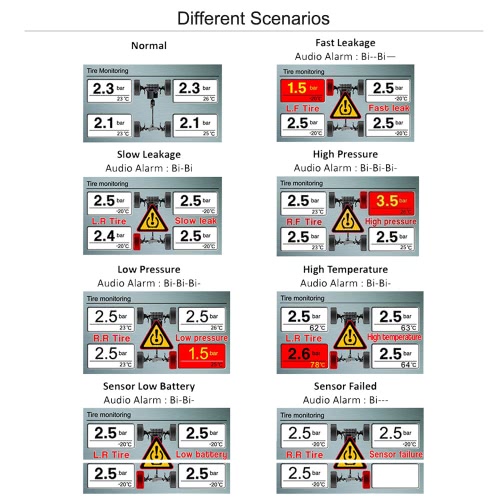 Try replacing the batteries first and check if the system works.
Try replacing the batteries first and check if the system works.
Home / Service / Installation of pressure sensors
Professional Pressure Sensor Installation Services
Prices
Sign up
Prices
Sign up
Installation of pressure sensors is carried out in Kaliningrad by specialists from the Shindorado tire center. Vehicle handling and fuel consumption are directly related to tire pressure. Modern tubeless tubes and rims create a closed space for air. Any slit that occurs at the junction of the tire and rim leads to air leakage and a decrease in pressure in the wheel. Another source of air leakage is the spool. You can install the control device yourself. But the specialists of "Shindorado" will install the sensor for monitoring tire pressure quickly, efficiently and at a low price. Find out the cost of the service from our price list or by phone: +7 (4012) 505 -120.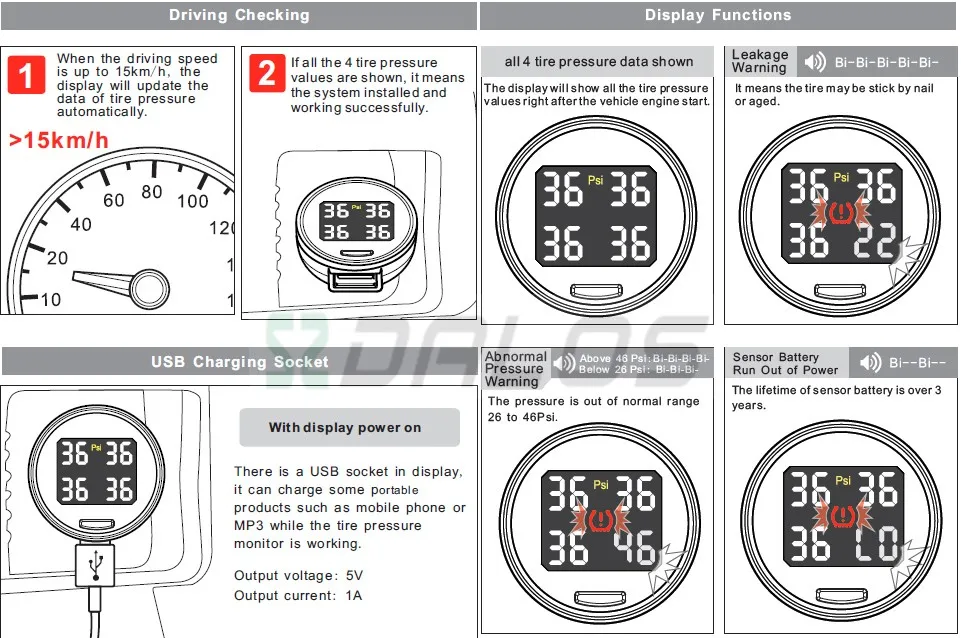
In the auto center "Shindorado" masters install external (but rarely) and internal special sensors to check the pressure and temperature of the air in tires. The readings are transmitted to the indicators on the side panel. When there is a critical change in readings, an alarm sounds. "Shindorado" customers are convinced that the installation of monitoring devices in the tires prevents wear of tires, bodywork, and reduces the consumption of gasoline or gas.
Our auto center provides car owners with unique services for the selection, installation and programming of pressure sensors in car tires.
The main advantages of using such devices:
Shindorado tire service offers a wide range of tire pressure sensors and repair kits.